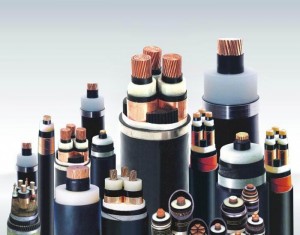In electrical design and technical transformation, electrical personnel often do not know how to scientifically select the cross-sectional area of cables. Experienced electricians will calculate the current based on the electrical load and select the cross-sectional area of the cable very simply; The union selects the cable cross-section based on the electrician’s formula; I would say that their experience is practical but not scientific. There are many posts on the Internet, but they are often not comprehensive enough and difficult to understand. Today I will share with you a scientific and simple method for selecting cable cross-sectional area. There are four methods for different occasions.
Select according to long-term allowable carrying capacity:
In order to ensure safety and the service life of the cable, the temperature of the cable after power-on should not exceed the specified long-term allowable operating temperature, which is 70 degrees for PVC insulated cables and 90 degrees for cross-linked polyethylene insulated cables. According to this principle , it is very simple to select the cable by looking up the table.
Give examples:
The transformer capacity of a factory is 2500KVa and the power supply is 10KV. If cross-linked polyethylene insulated cables are used to lay them in the bridge, what should be the cross-sectional area of the cables?
Step 1: Calculate the rated current 2500/10.5/1.732=137A
Step 2: Check the cable selection manual to find out,
YJV-8.7/10KV-3X25 carrying capacity is 120A
YJV-8.7/10KV-3X35 carrying capacity is 140A
Step 3: Select YJV-8.7/10KV-3X35 cable with a carrying capacity greater than 137A, which can theoretically meet the requirements. Note: This method does not consider the requirements for dynamic stability and thermal stability.
Select according to economical current density:
To simply understand the economic current density, the cross-sectional area of the cable affects the line investment and electric energy loss. In order to save investment, it is hoped that the cable cross-sectional area is smaller; in order to reduce electric energy loss, it is hoped that the cable cross-sectional area is larger. Based on the above considerations, determine a reasonable The cross-sectional area of the cable is called the economic cross-sectional area, and the corresponding current density is called the economic current density.
Method: According to the annual operating hours of the equipment, look up the table to obtain the economic current density. Unit: A/mm2
For example: The rated current of the equipment is 150A, and the annual operation time is 8,000 hours. What is the cross-sectional area of the copper core cable?
According to the above table C-1, it can be seen that for 8000 hours, the economic density is 1.75A/mm2
S=150/1.75=85.7A
Conclusion: The cable cross-sectional area we can choose according to the cable specifications is 95mm2
Select according to thermal stability coefficient:
When we use the first and second methods to select the cable cross-sectional area, if the cable is very long, there will be a certain voltage drop during operation and startup. The voltage on the equipment side is lower than a certain range, which will cause the equipment to heat up. According to the requirements of the “Electrician’s Manual”, the voltage drop of a 400V line cannot be less than 7%, that is, 380VX7%=26.6V. The voltage drop calculation formula (only purely resistive voltage drops are considered here):
U=I×ρ×L/S S=I×ρ×L/U
U voltage drop I is the rated current of the equipment ρ conductor resistivity S is the cable cross-sectional area L is the cable length
Example: The rated current of 380V equipment is 150A, using copper core cable (ρ of copper = 0.0175Ω.mm2/m), the voltage drop is required to be less than 7% (U=26.6V), the cable length is 600 meters, what is the cable cross-sectional area S? ?
According to the formula S=I×ρ×L/U=150×0.0175×600/26.6=59.2mm2
Conclusion: The cable cross-sectional area is selected as 70mm2.
Select according to thermal stability coefficient:
1. When 0.4KV cables are protected by air switches, general cables can meet the thermal stability requirements and there is no need to check according to this method.
2. For cables above 6KV, after selecting the cable cross-sectional area using the above method, you must check whether it meets the thermal stability requirements according to the following formula. If not, you need to select a larger cross-sectional area.
Formula: Smin=Id×√Ti/C
Among them, Ti is the breaking time of the circuit breaker, which is taken as 0.25S, C is the cable thermal stability coefficient, which is taken as 80, and Id is the three-phase short-circuit current value of the system.
Example: How to choose the cable cross-sectional area when the system short-circuit current is 18KA.
Smin=18000×√0.25/80=112.5mm2
Conclusion: If the system short-circuit current reaches 18KA, even if the rated current of the equipment is small, the cable cross-sectional area should not be less than 120mm2.
Email: sales@zhongweicables.com
Mobile/Whatspp/Wechat: +86 17758694970
Post time: Sep-13-2023





